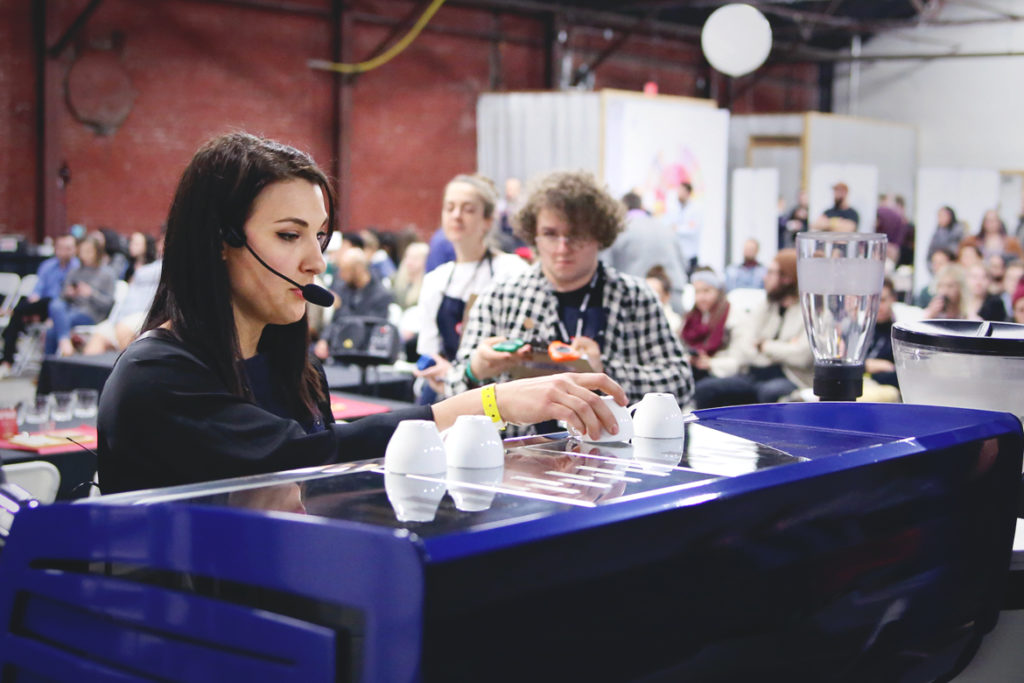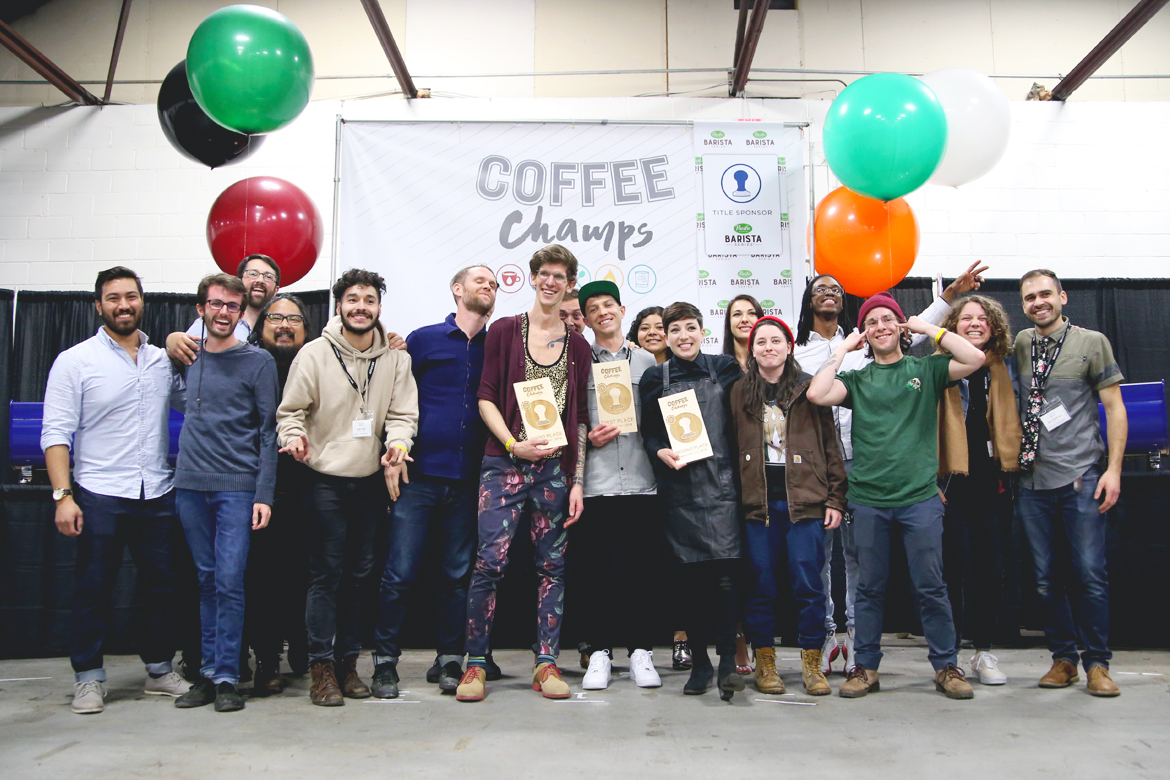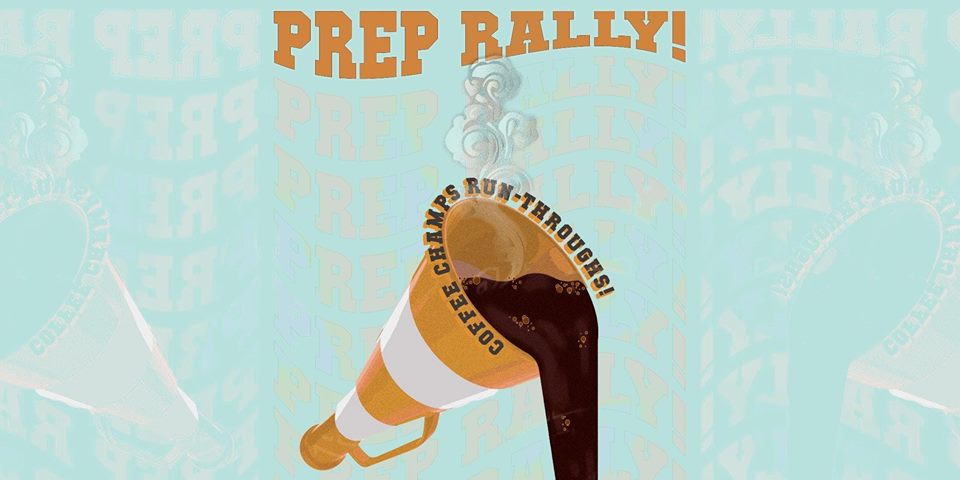26 competitors took the stage today here at Day Two of the Barista Championship portion of the US Coffee Championships Qualifying Event in Nashville, Tennessee. Day One was all about the rookies, and there were many of them, but Day Two marked the return of the vets. There were first-timers on Day Two, sure, but the lineup was one mostly of familiar names.
Now all that’s left is the waiting to find out who will make it onto the national stage of competition taking place in Kansas City, Missouri later this year in March. But in the meantime, let’s look back at today’s routines, shall we?
SprudgeLive’s coverage of the 2019 US Coffee Champs is made possible by Joe Glo and Mahlkönig. All of SprudgeLive’s 2019 competition coverage is made possible by Acaia, Baratza, Faema, Cafe Imports, and Wilbur Curtis.
Joe Burns, Convive Coffee Roastery
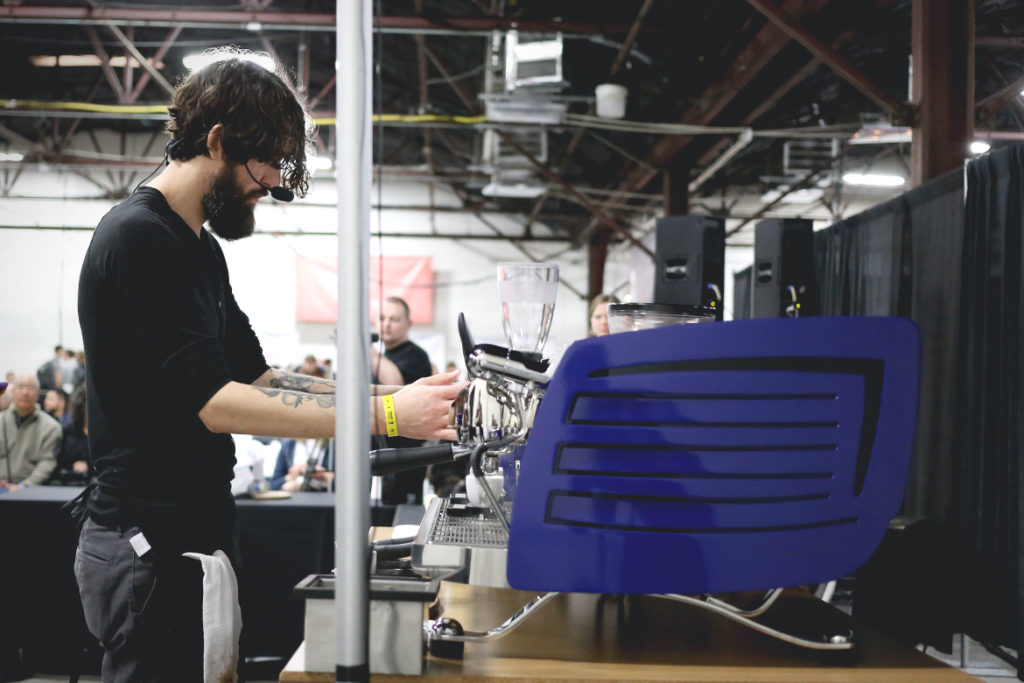
Burns is competing with an SL28 from Costa Rica.
For his sig bev based on a Panamanian cocktail, Burns incorporates pineapple, cane syrup, avocado oil, and egg white with his Costa Rican espresso.
Burns is the first competitor of the entire competition to opt to serve sig bevs as the first course. We’ve seen sig bev prep start a few routines, but never the full course.
Espresso for Burns has flavors of caramelized sugar, golden raisin, plum, and pomelo (“a friendly grapefruit”).
Joe Burns, by the way, is about as close as an American name can get to “Hot Coffee.” Respect.
Karynn Brown, Cultiva Coffee
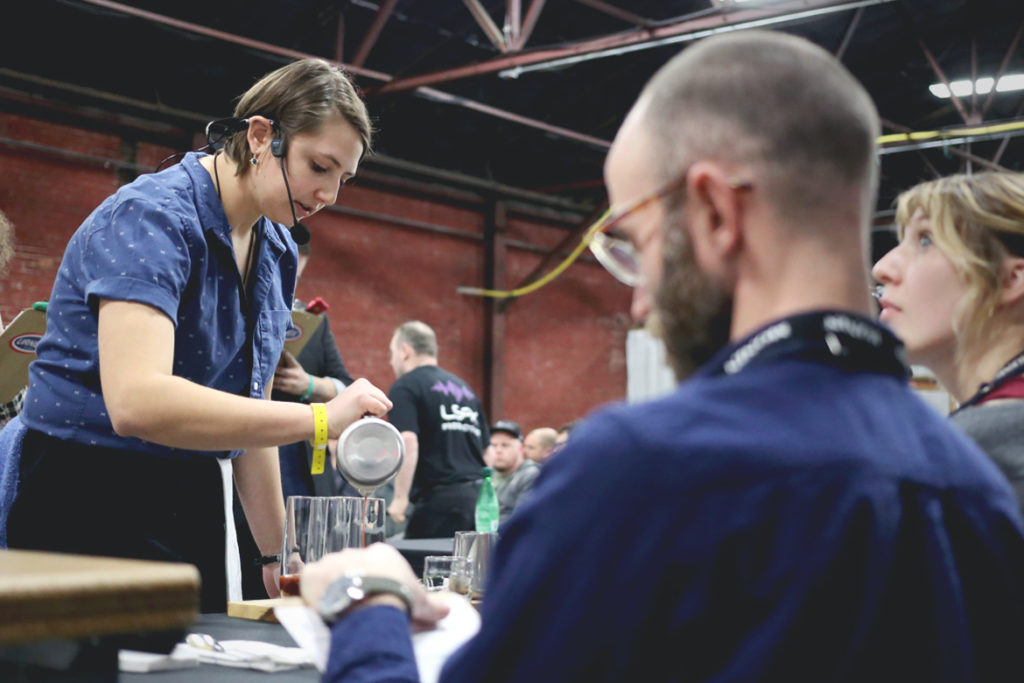
.@karynn_brown competes with an experimental fermented natural then wash processed Bourbon Noir coffee grown on Finca Las Margaritas in Colombia.
Dosing at 21g to stretch out the flavors inherent in the cup, @karynn_browns’ Bourbon Noir espressos exhibit flavors of blackberry, apple, and cinnamon.
Making a blackberry spritzer, @karynn_brown double-strains blackberry puree and espresso for her sig bev.
Shane Hess, Jubala Coffee
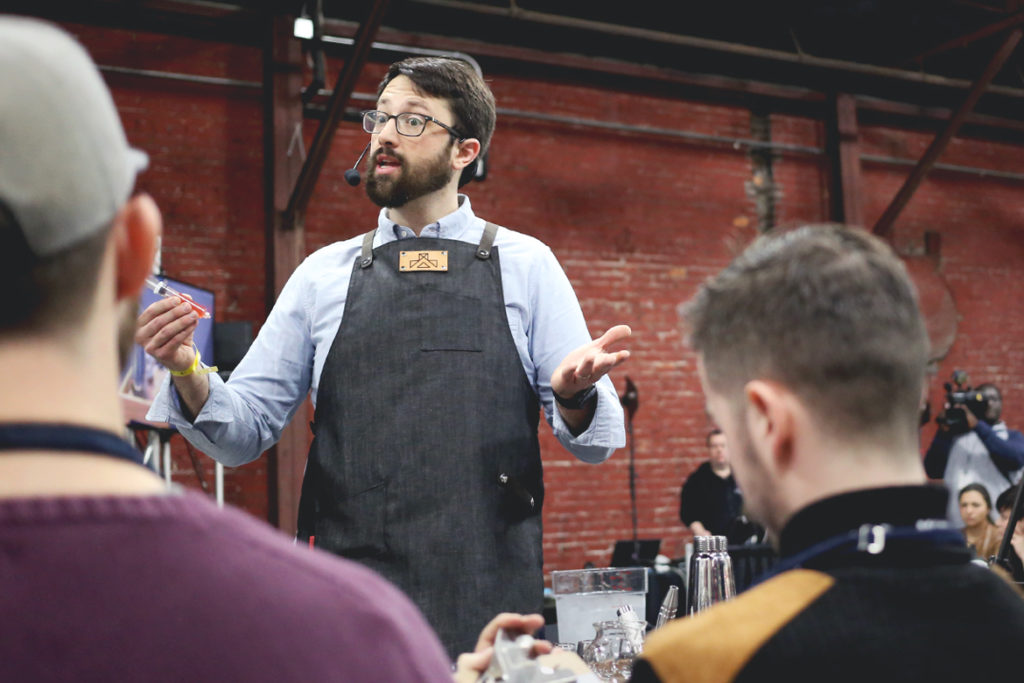
No lack of lacto in Hess’ performance, using a lacto-fermented coffee from @LAPALMAyELTUCAN in Colombia.
Black cherry, naval orange, and a wine acidity in Hess’ icosa-stirred espresso course.
Strawberry shrub, La Palma spro, and water get a nitro charge for Hess’ sig Bev here at #coffeechampsnashville
The soundtrack for Hess, best I can tell, has been a single note played on a synthesizer for the entirety of the routine. I feel like I just ended a yin yoga session
James Lee, Broadsheet Coffee Roasters
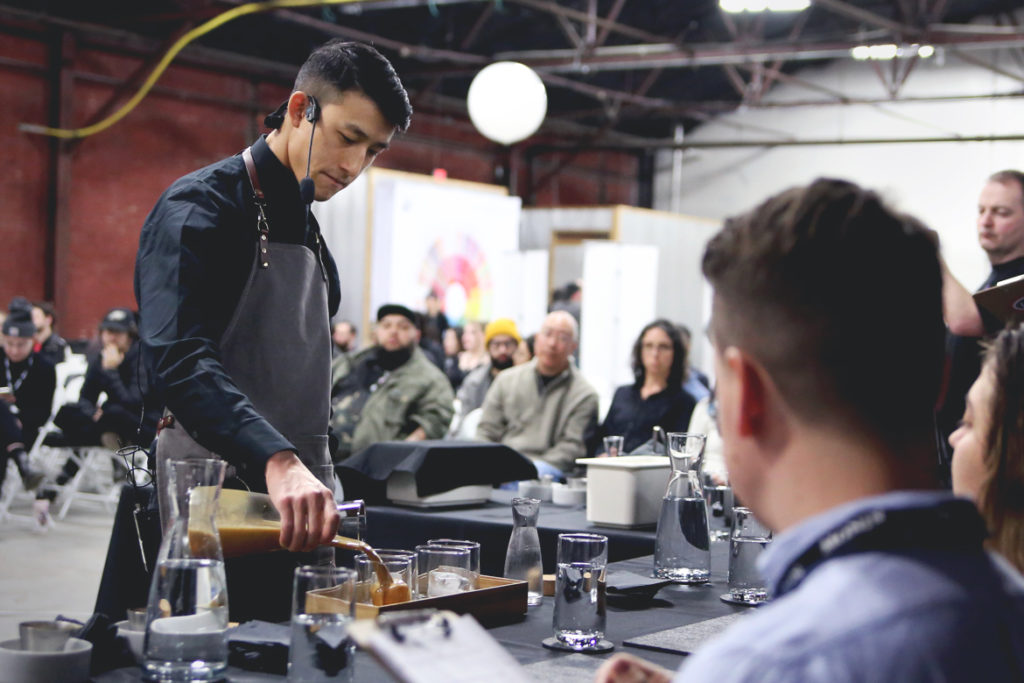
Pomelo, tart cherry, and dark chocolate in the natural processed espresso course for Lee
For his sig bev, Lee incorporates a pomelo zest simple, xanthan gum, and vanilla syrup.
James Lee of @broadsheetroast calls time at 9:51
Ali Abderrahman, State Street Coffee/La Reunion
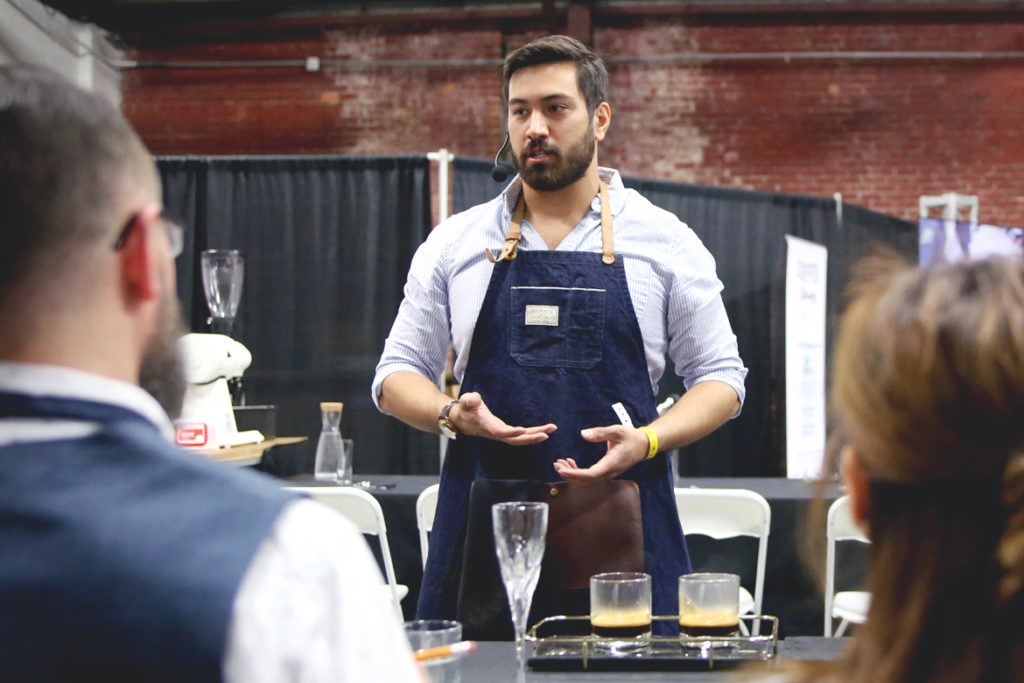
Abderrahman competes today with a washed heirloom variety coffee from the Gedeb region of Ethiopia.
Pulled at 18g in, 50g out, Abderrahman’s espresso course has notes of kiwi, tangerine, meyer lemon, and a malty black tea.
Abderrahman’s sig bev is based on the idea of connecting customers with origin, which he describes as “the way forward for the industry.” To do so, he uses brown sugar/jasmine green tea simple, sweet lime juice, and fresh crushed ginger to highlight the Gedeb espresso
Patrick Rush, Blanchard’s Coffee Roasting Co
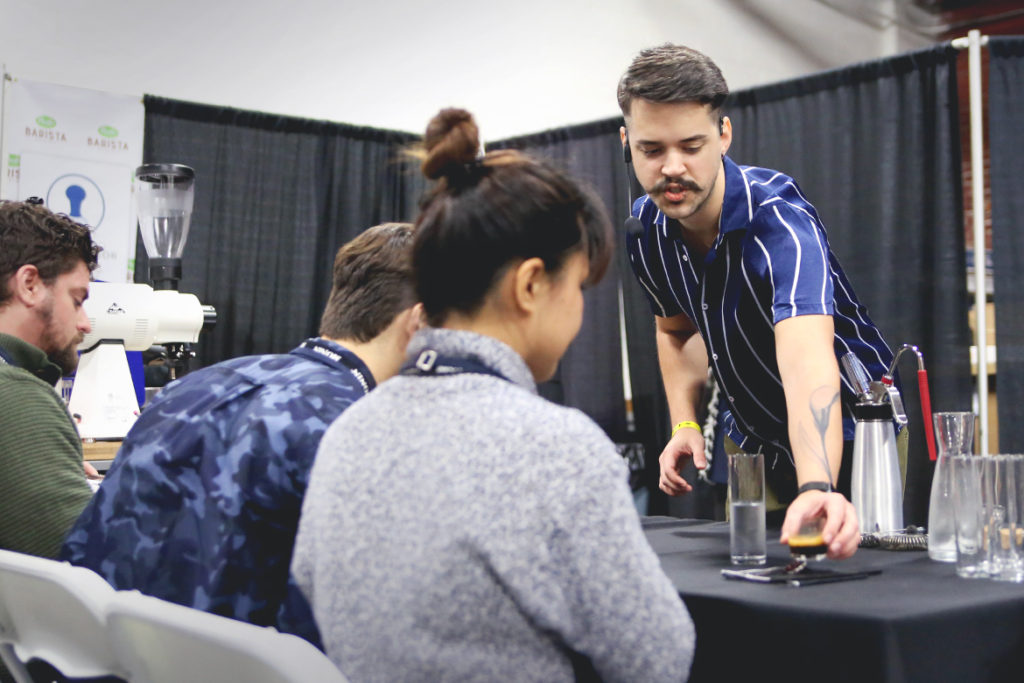
For his routine, @patrickarush is using a natural processed Gesha variety coffee grown by Pablo Herrera in Colombia.
Gesha natural espresso course for @patrickarush has notes of dark chocolate, dried cherry, honey sweetness, lime acidity, and orange florals.
For his sig bev, @patrickarush give a whey reduction and lime peel a nitrous charge, then finishes it off with honey simple and natural Gesha espresso.
There has been an uptick in the use of whey this comp season, but no one has paired it with a Guatemalan espresso, missing out on a chance for a Way Whey Huehue.
Isaiah Sheese, Archetype Coffee
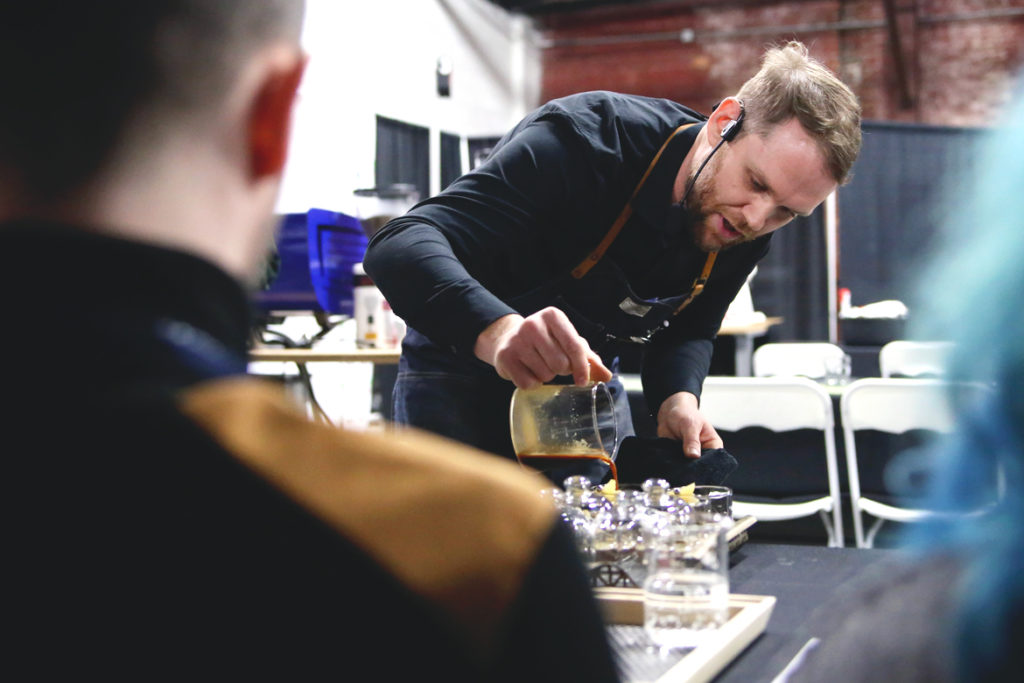
Sheese competes with a natural processed heirloom variety Ethiopia from Sidama. The coffee was hand sorted by Sheese and is now an 85/15 blend of screen size 13,14, and peaberry and screen size 15.
20g in, 45g out, espresso for Sheese has notes of dried apricot, lime, 65% dark chocolate finish and candied ginger.
For his sig bev, Sheese incorporates dried apricot, lime, and candied ginger simple, coffee flower honey, and rose water to highlight the notes of his natural Ethiopia espresso.
Isaiah Sheese of @archetypecoffee calls time at 10:00 on the dot.
Joe Dininger, Heine Brothers Coffee
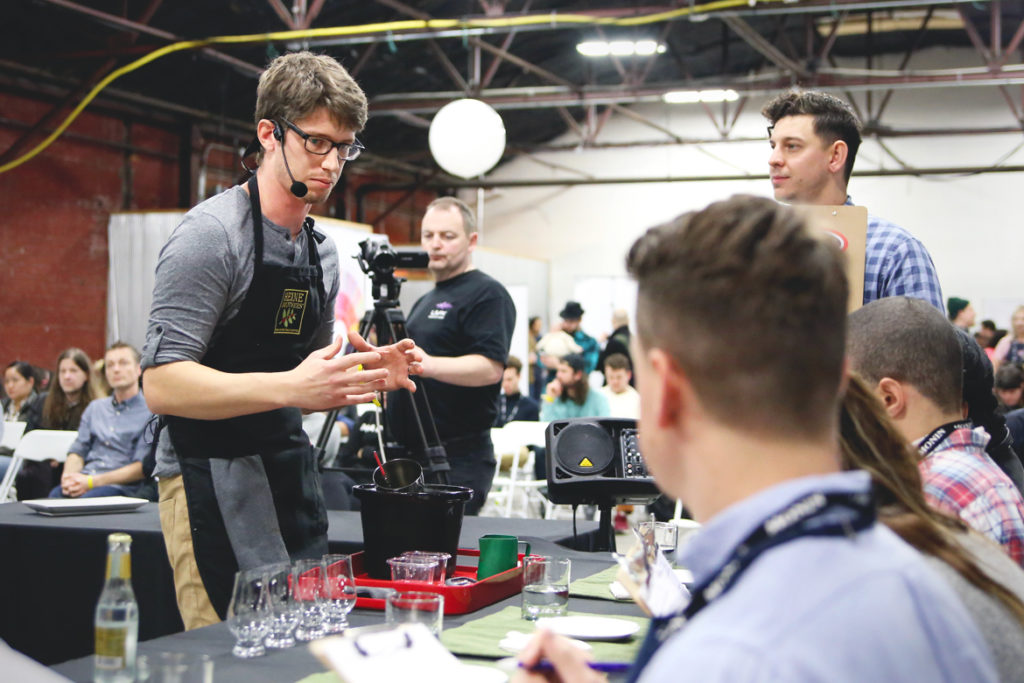
Dininger’s coffee today is a mix of Colombia, Typica, Caturra, and Castillo varieties grown in Cauca, Colombia by Fondo Paez.
Lemon acidity with notes of cherr and a brown sugar and molasses finish for Dininger’s Colombia espresso course.
Cherry shrub, apple cider vinegar, tonic water, and espresso for Dininger’s sig bev course.
Ryan Wojton, Madcap Coffee Co
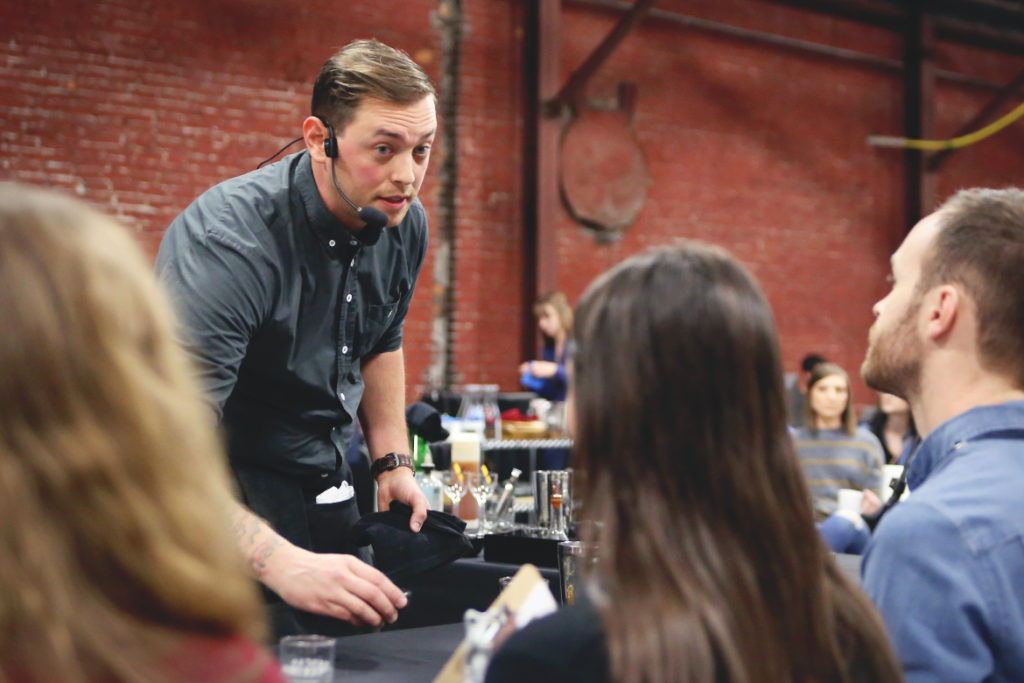
Like he did 4 years ago, @RyanScottWojton competes today with an 80/20 Caturra/Bourbon grown by Luis Reinoso on Finca Vista Hermosa in Tolima, Colombia.
With a tart cherry acidity, @ryanscottwojton‘s Reinoso espresso has notes of fresh cherry, pomelo, brown sugar sweetness, and a amaro bitterness.
For his sig bev, @ryanscottwojton uses honey, star anise water, n/a bitters, mixed with three ice cubes and lightly shaken, then finished off with tonic, giving the drink the flavors of an amaro spritz
Elisabeth Johnson, Venture Coffee Co
Johnson competes today with the first full harvest of the Gesha variety from Finca Las Brisas in Huila, Colombia.
Notes of redcurrant, raspberry, papaya, and dark chocolate in Johnson’s washed Las Brisas Gesha.
Kiwi, pineapple juice, and agave, all nitro infused for Johnson’s sig bev.
Trevor Wallis, Kaldi’s Coffee Roasting Co
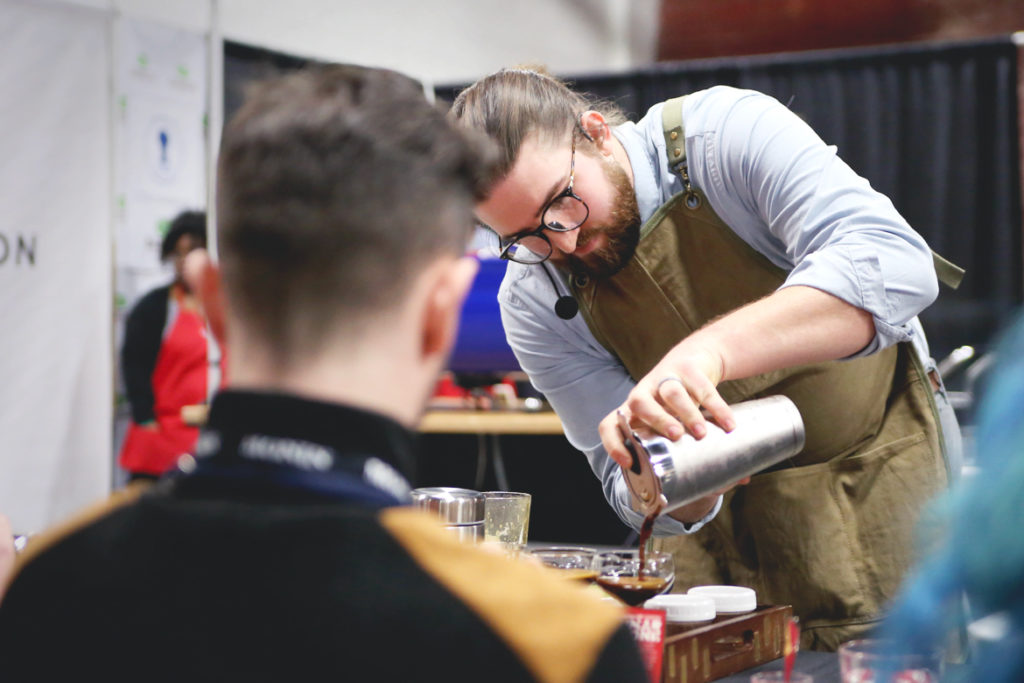
A mix of Caturra, Catuai, Catamor, and S795, @trevorwallis13 competes with a natural processed coffee from Myanmar grown at 1,200MASL.
Notes of Tobacco, red plum, raisin sweetness, and maple in @trevorwallis13‘s natural Myanmar espresso course.
Using a raspberry molasses syrup, Wallis’ sig bev expresses notes of lime acidity, tobacco, candied prune, dark roasted barley malt, and dark chocolate covered raspberry.
Damian Giles, Prince Coffee
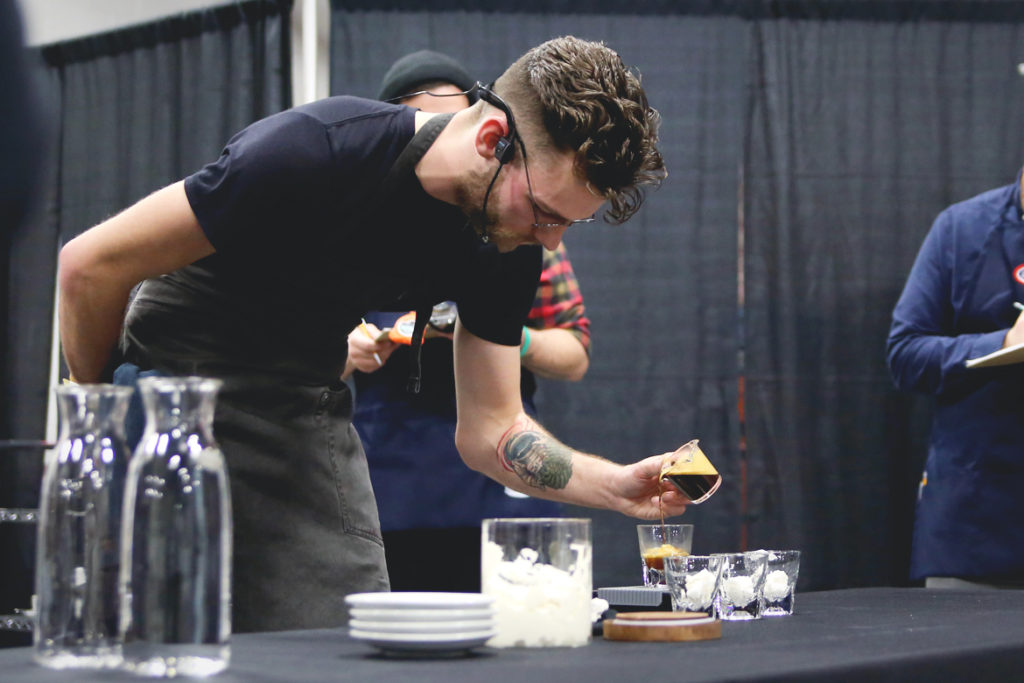
Giles is using a washed Honduran coffee grown at 2200 MASL, with tasting notes of caramel and orange marmalade
We’ve got whipped cream. Giles is scooping some lovely fresh whipped cream with peach preserves into gibralters for his sig bev, which he pours espresso over.
Damian Giles of @princecoffeepdx calls time at 9:54
Juan Diaz, Deeply Coffee Co
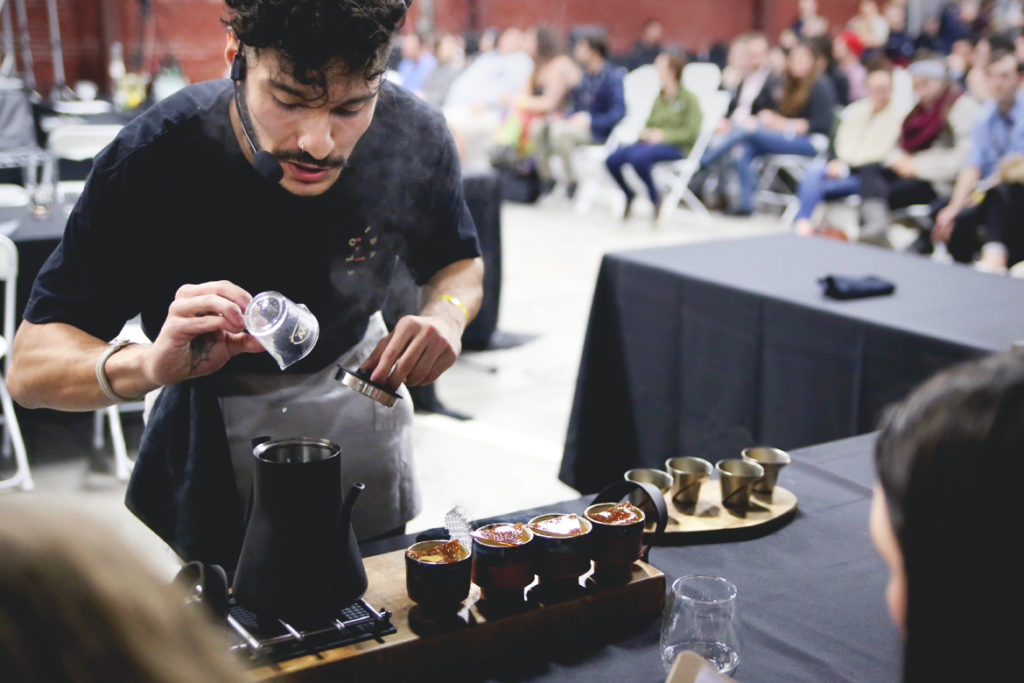
Diaz is our second competitor today to use a lactic acid processed coffee from @LAPALMAyELTUCAN in Colombia.
Grown at 1,600 MASL, Diaz’s La Palma is 100% Castillo variety, roasted by Black & White Coffee Roasters.
Notes of blackberry, orange, and pomelo in Diaz’s espresso course, after 7 stirs and a 10-second waiting period.
Lime juice, panela, grapefruit, honey, and molasses all present in Diaz’s sig bev.
Ben Vollmar, Flatlands Coffee
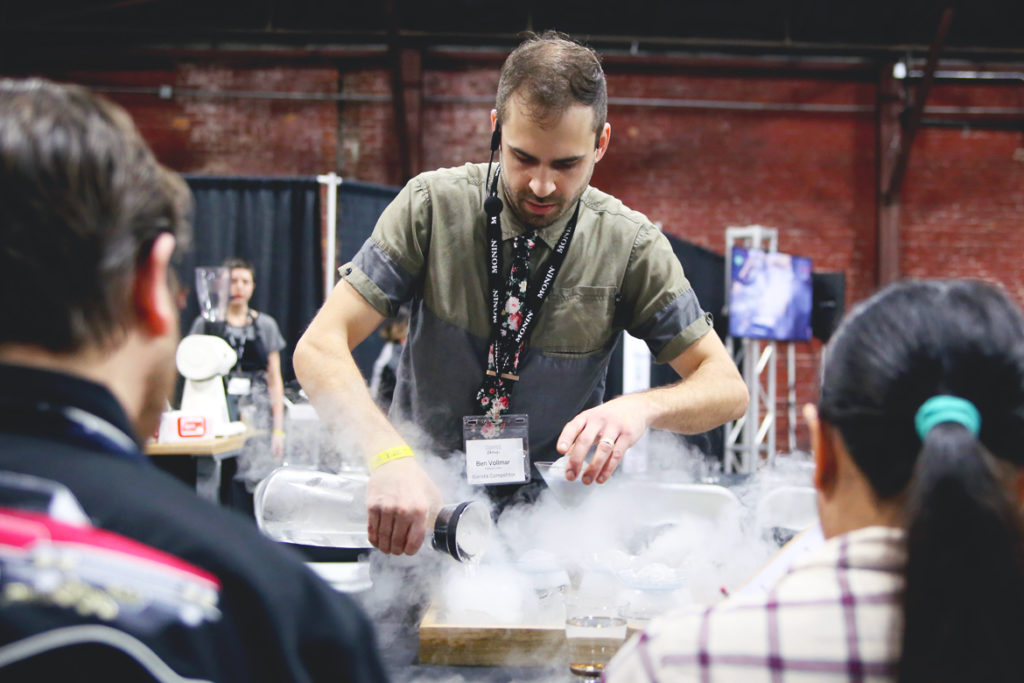
“Intentionality is magic.” – @bvollma
Using a wash processed coffee from the Hambela Estate in Ethiopia, @bvollma‘s espresso have notes of white grape, lime and grapefruit zest, and magnolia.
It’s getting steamy in here! Using dry ice, @bvollma sig bev includes silver needle white and butterfly pea flower tea, almond milk, frozen aloe juice, topped with Hambela espresso.
Hannah Vered, Ogawa Coffee
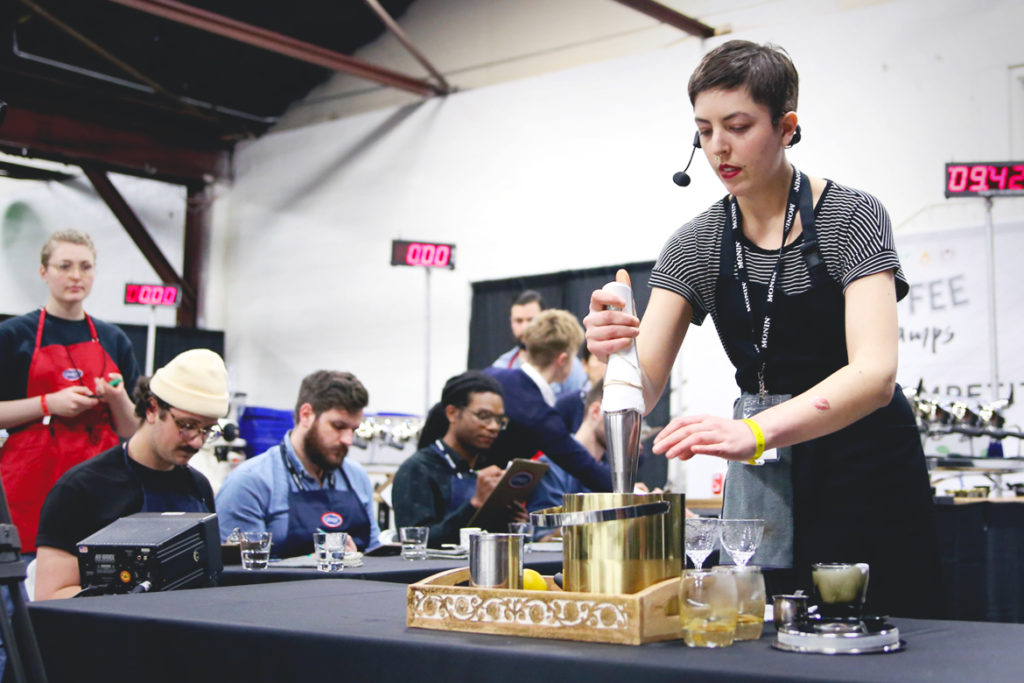
Vered starts off her routine with her own cafe faux pas: bringing her own bagel and asking them to toast it.
Espresso and a homemade yogurt make up Vered’s sig bev.
Hannah Vered of Ogawa Coffee calls time at 10:47
Zachary Domville, Post Coffee Co
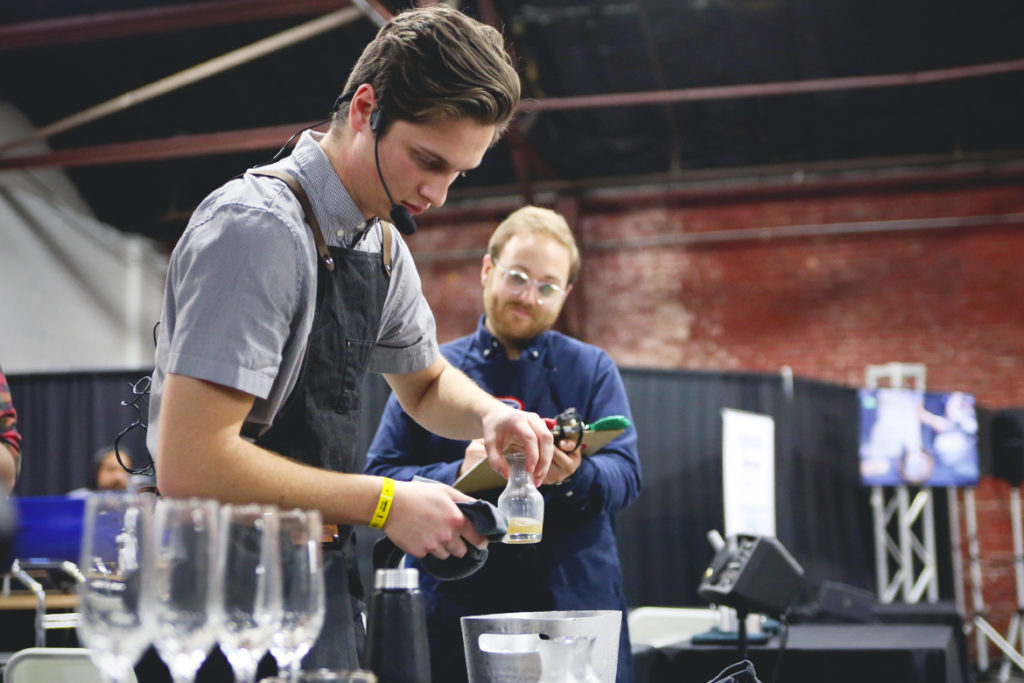
Making shots for the sig bev course first, Domville is using a washed coffee from the Yirgacheffe region of Ethiopia.
After 30 seconds of vigorous stirring, Domville’s Yirgacheffe espressos have notes of blood orange, raspberry sweetness, and dark chocolate
Wildflower honey and black tea comprise the basis of Domville’s Yirg sig bev.
Anthony Ragler, Counter Culture Coffee
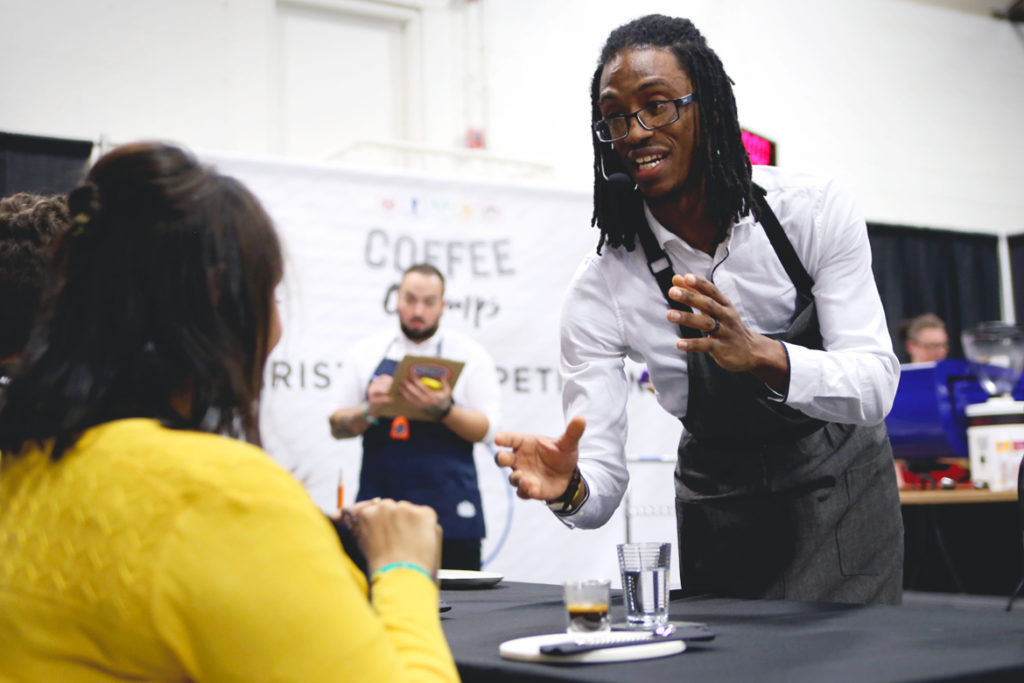
“We forget about the demand chain. How valuable can a supply chain truly be if we forget about the people who enjoy it?” – Anthony Ragler
Using a single farmer lot from Kirinyaga, Kenya, Ragler’s espresso has notes of blackcurrant with a juicy mouthfeel, stirred 10 times clockwise.
With flavors of a chocolate covered raspberry, Ragler’s sig bev includes hibiscus and dried rosemary tea, agave nectar, and espresso all nitro charged.
Cris Mendoza, Saint Frank Coffee
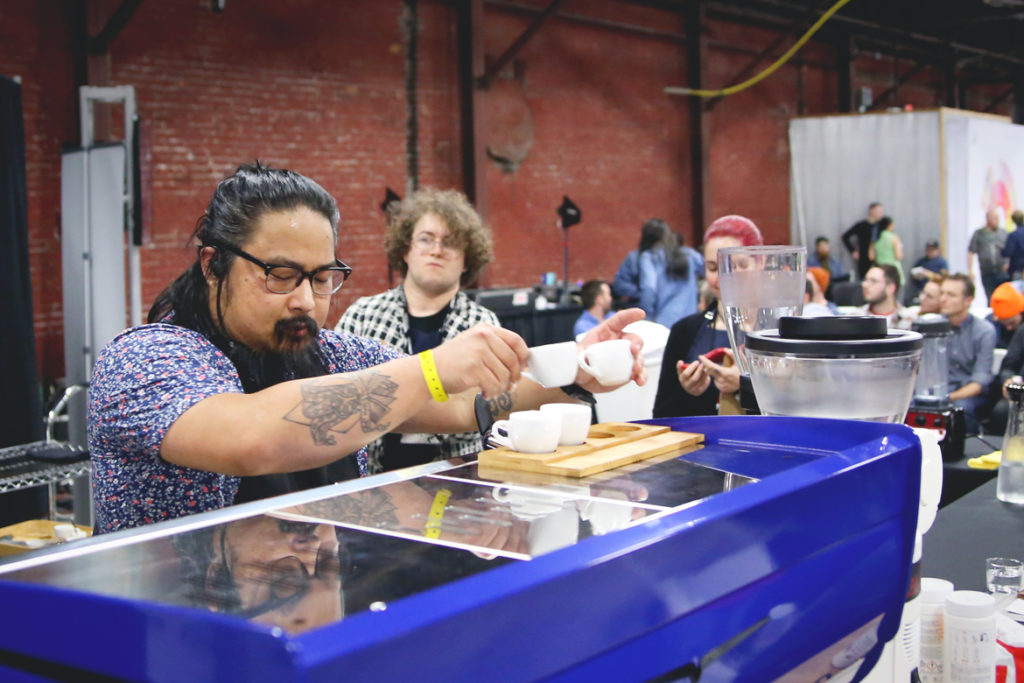
Coffee for @crisjmendoza is from Santa Barbara, Honduras grown at 1640-1670MASL. @StFrankCoffee
Blending together molasses syrup and Honduran espresso, Mendoza’s sig bev is served in super chilled glassware.
With no clock to keep time, Cris Mendoza of @stfrankcoffee calls time
Connor Usry, Sump Coffee
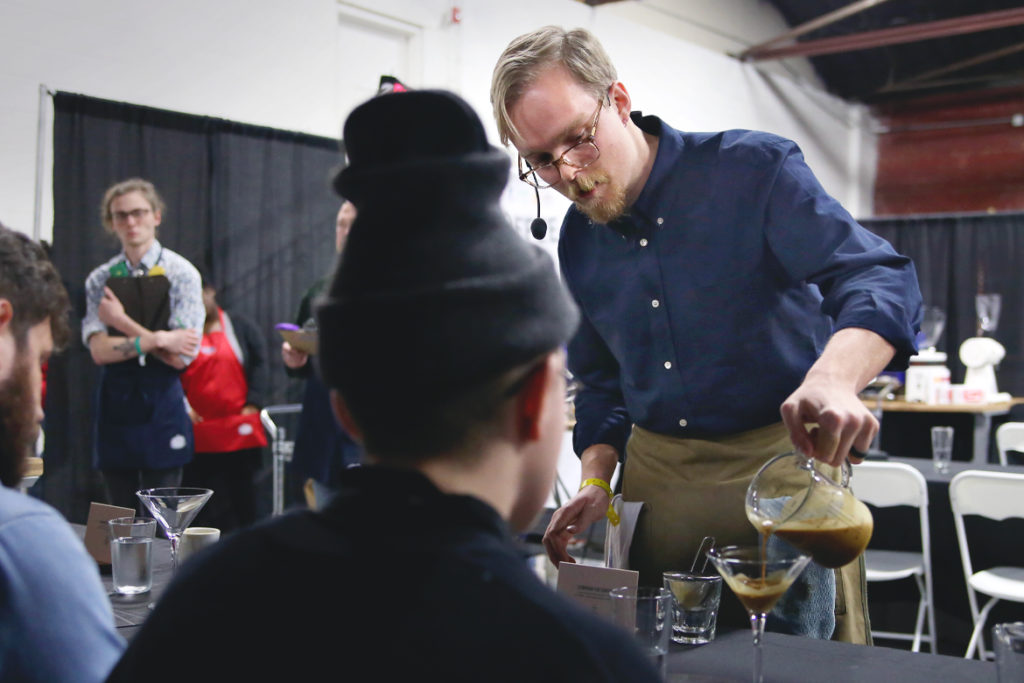
.@connorusry is taking judges back to his aha moment with coffee: a natural Ethiopia. Today, Usry is using a heirloom variety coffee from Kochere grown at 1900 MASL
Cocoa powder bitterness followed by raspberry, grape, and strawberry notes, with a sweetart candy sweetness for @connorusry‘s natural Ethiopia espresso course.
Drawing inspiration from Southeastern Asian cuisine, @connorusry‘s sig bev includes coconut cream, thai basil, lime leaves, lemongrass, curry powder, and cayenne pepper along with a ginger and pineapple shrub.
Selina Gonzalez, Greater Goods Coffee Roasters
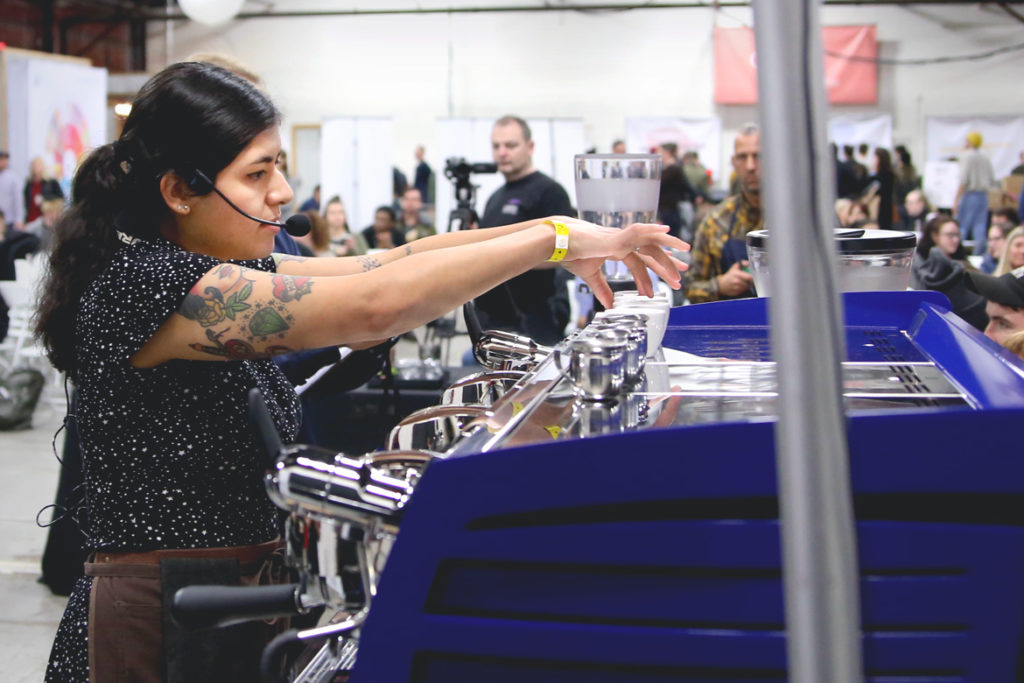
Gonzalez competes today with a coffee from Finca Cañada Fría in Tlaltetela, Veracruz, Mexico, grown by José Daniel Cóbilt Castro.
In fact, the coffee Gonzalez is using took 9th in the 2018 Mexico Cup of Excellence competition.
Honeysuckle, vanilla, and marzipan aromas turn into an apple acidity with notes of cinnamon, clove, almond, and cherry for Gonzalez’s COE espresso.
For her sig bev, Gonzalez uses a dark sweet cherry and cinnamon reduction, tootsie roll condensed milk sauce, and a lime juice rim to create a drink reminiscent of cola.
Adam JacksonBey, Tell Coffee
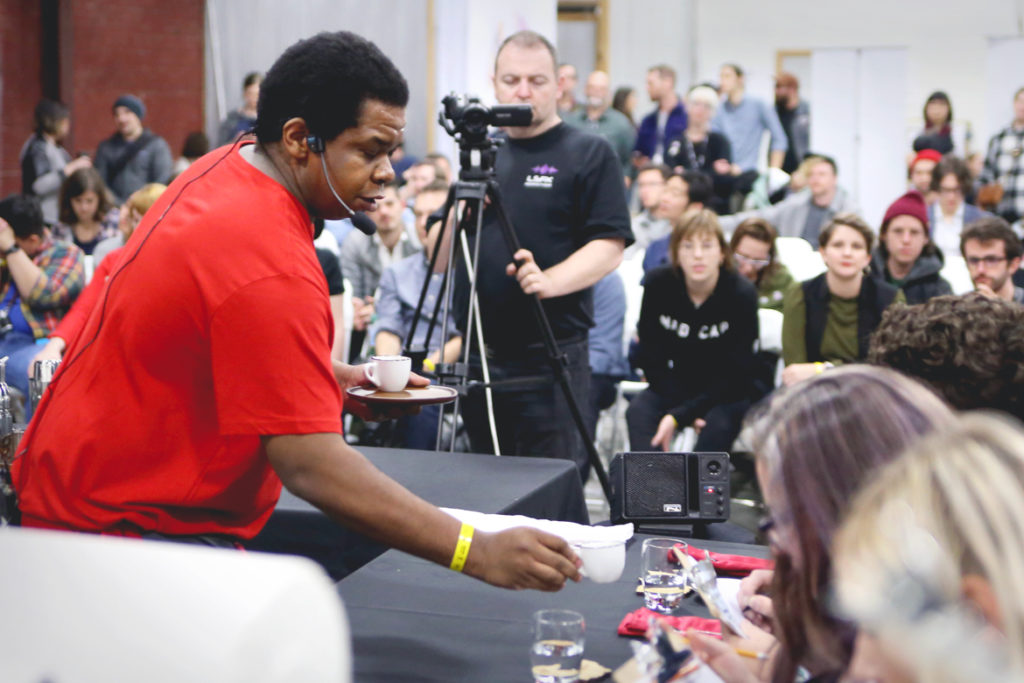
We are no longer taking any further bets on the pun count for @ditriech‘s routine. The line was set at 2.5 (I took the over).
There’s life in the room as @ditriech performs. The crowd has visibly grown. The Kendrick on the soundtrack certainly doesn’t hurt either.
Grapefruit, pipe tobacco, and black berry in @ditriech‘s washed SL28 espresso roasted by @counter_culture
Sig bev for @ditriech includes aged lime juice, pasteurized egg white, and cane sugar simple, all shaken together, reminiscent of a Pisco sour.
Samuel Smith, Topeca Coffee Roasters
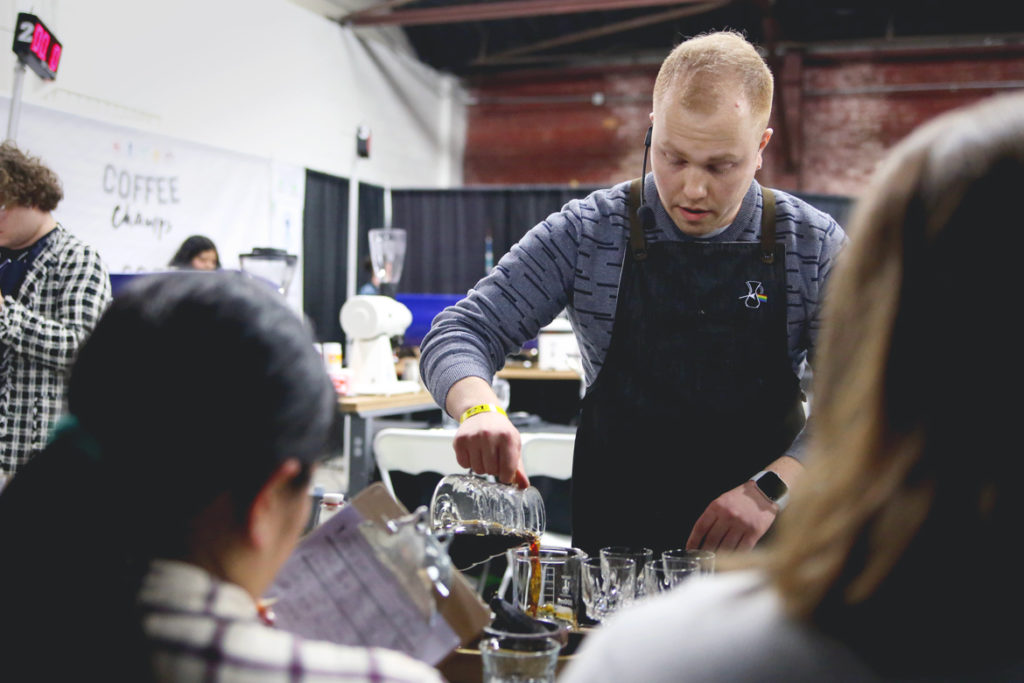
Using a 60/40 blend of natural and honey processed coffees, @samuelwhittier‘s espresso course has notes of dried cranberry, roasted pineapple, and sweet nectarine.
Sig bev for @samuelwhittier is a take on a red eye, using pour-over coffee and espresso but elevating it with cascara cold brew tea, cascara demerara syrup, and sea salt, finished with a cascara cream.
Samuel Smith of @topecacoffee calls time at 10:37
Gisel Alvarez, Monarch
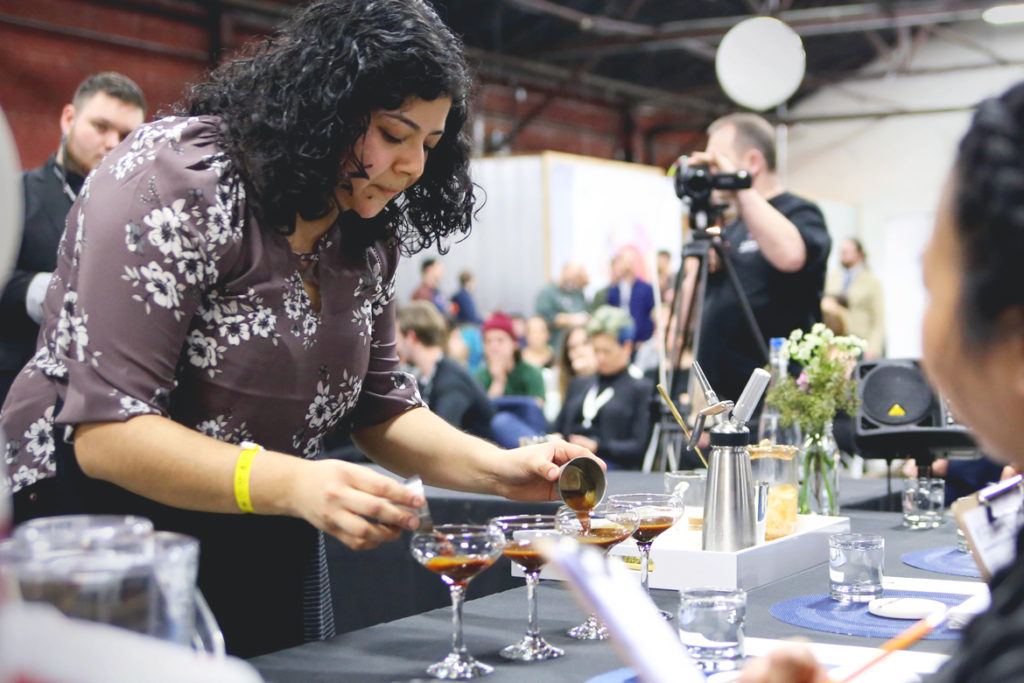
Alvarez is using a washed heirloom variety Ethiopia grown at 2,400MASL, exhibiting a lime acidity, honeysuckle and brown sugar sweetness, and a black tea bitterness.
Sig bev for Alvarez is comprised of a lime saccharine, blueberry and black tea foam, all garnished with flowers perfumed with rose essential oils.
Gisel Alvarez of @monarchcoffeekc calls time at 9:58
Dylan Siemens, Onyx Coffee Lab
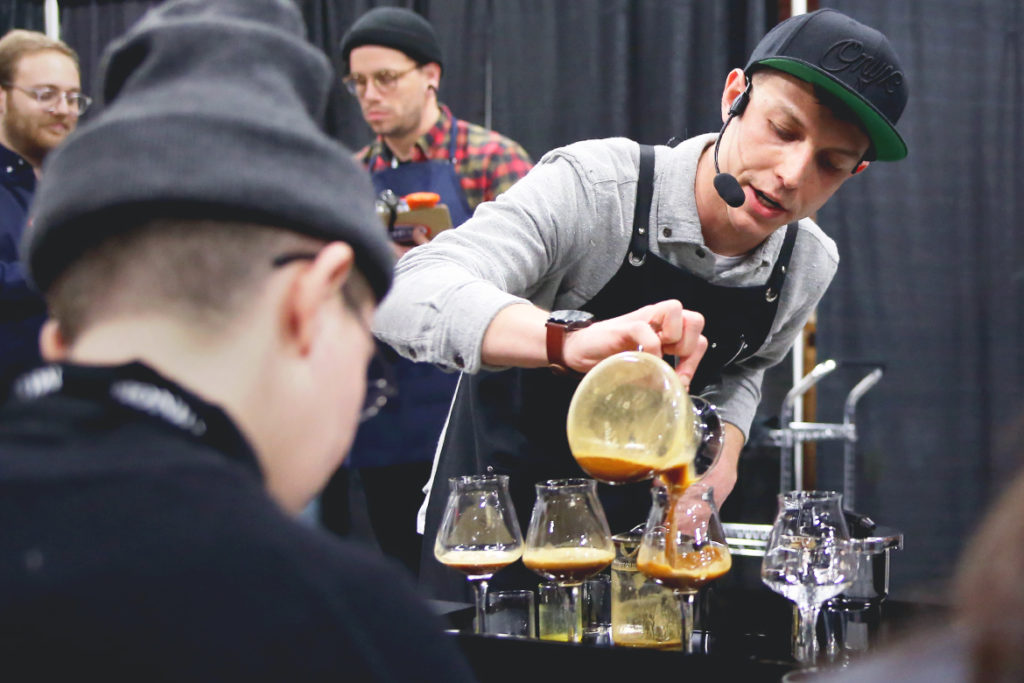
After winning the 2017 US Brewers Cup, Siemens has turned his sights to the Barista Championship.
What does it mean to be a barista? Is it pressing buttons on a super-automatic machine or is it knowing every nuance of a coffee? Is it neither? Is it both? Siemens is going to use his routine to explore the idea further.
Siemens is using a Gesha variety from @LAPALMAyELTUCAN from Colombia, grown at 1800MASL.
Pulling shots in chilled 50 deg F portafilters, Siemens’ La Palma espressos have notes of grapefruit, rose, and cacao nib.
Sig bev for Siemens includes raw vanilla sugar, clarified milk (made of raspberries, cacao shells, rose, cinnamon sticks, lime juice, and milk), and mango juice, all nitro infused.
Samantha Spillman, Dillanos Coffee Roasters
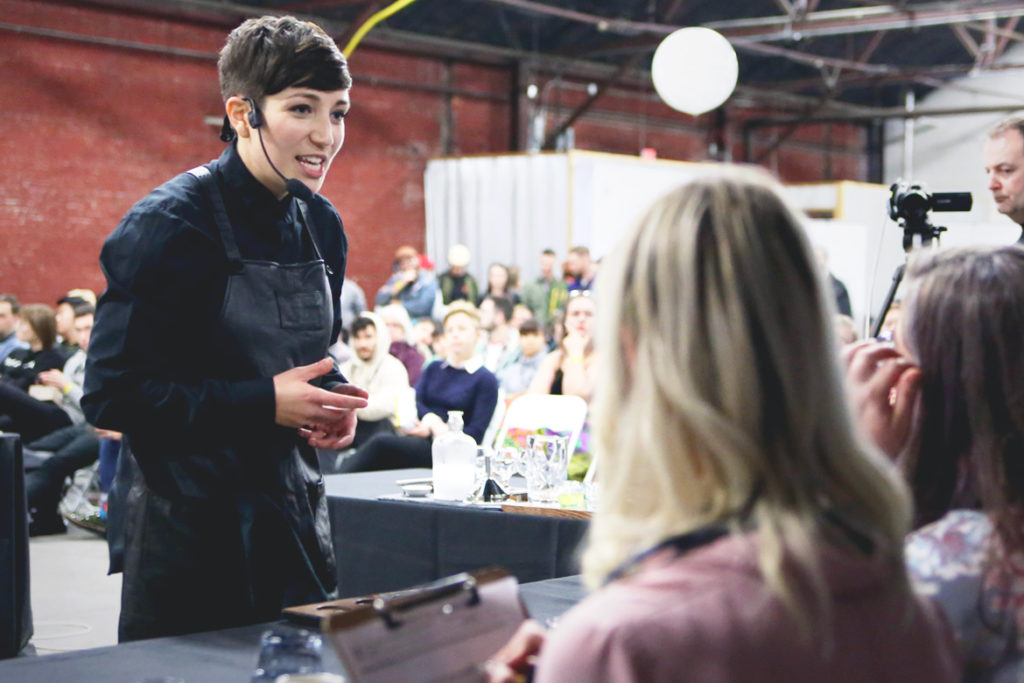
Spillman is competing with a semi-macerated anaerobic fermented coffee from @LAPALMAyELTUCAN in Colombia.
Pineapple, raspberry, and pomegranate with a drying, fresh cranberry finish for Spillman’s La Palma espresso course.
Pineapple juice, passionfruit juice, lychee soda, citric acid solution, and coconut vinegar play off the flavor inherent in the La Palma espresso for Spillman’s sig bev.
T. Ben Fischer, Elixr Coffee Roasters
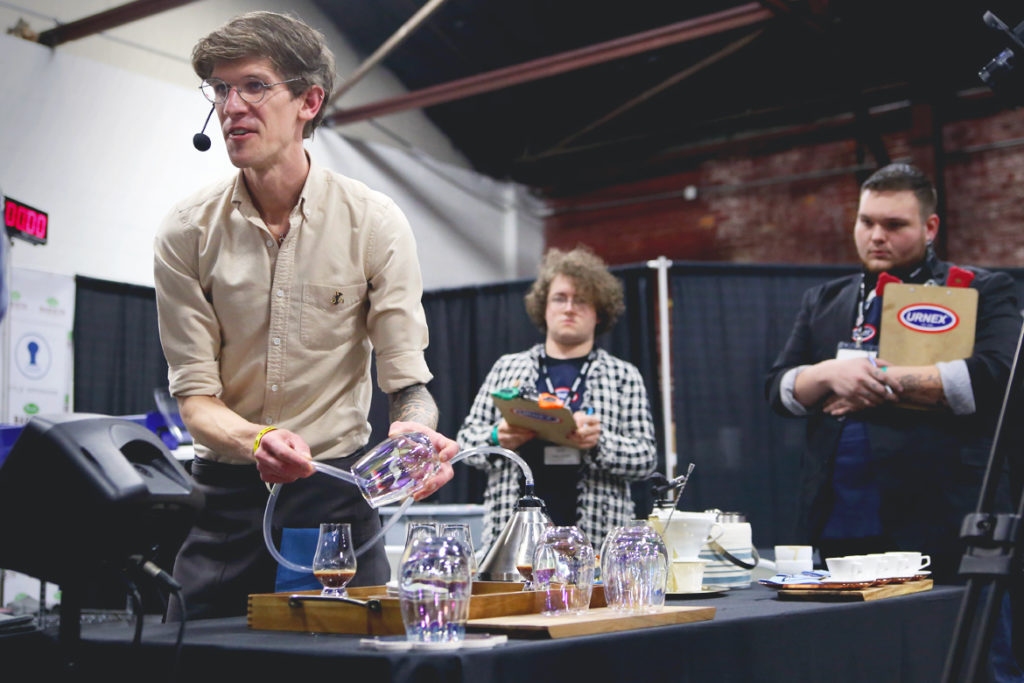
Our 3rd competitor in a row, @TBenFischer competes with a coffee from @LAPALMAyELTUCAN, an 80/20 blend of Gesha and Castillo, both lactic acid fermented.
Raspberry, apricot, semisweet chocolate, and bergamot florals expressed in @TBenFischer
“Leave your cat spoons on your napkins.” The Lion King may be gone, but the @tbenfischer we’ve all grown to love over the past comp seasons is still there.
Sig bev for @tbenfischer includes an anaerobic fermented juice, clarified milk, bruleed brown sugar simple, and jasmine flower vapor.
Thanks for tuning in with us this weekend!

